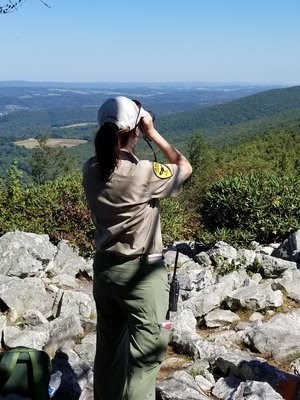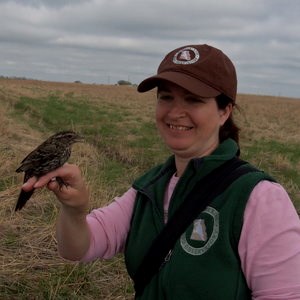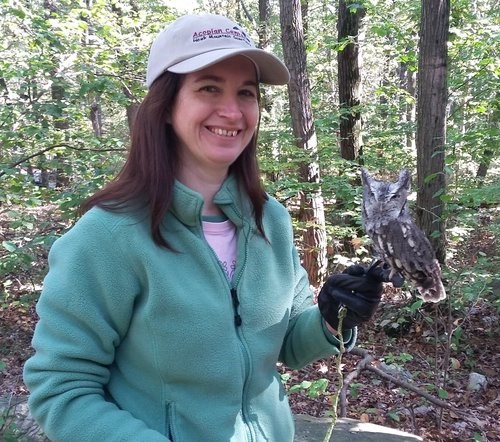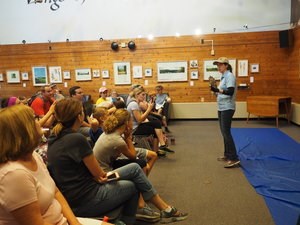Best Laid Plans
Posted on in On the Mountain by Andrea Ambrose, Education Intern

I thought that I had it all figured out when I got my first taste of being a field biologist. I was in the last semester of attending my local community college, and I always knew that I wanted to work with wildlife in some capacity, but I just couldn't quite figure out what direction to take. A professor at my school was offering a three-week field ecology course on campus with local field trips. We learned identification of local birds to monitor species on campus, (incidentally this is how my passion for birding began, leading to a pursuit for many jobs focused on avian conservation), went for a weekend to a marine science consortium in Virginia to learn about marine research and marsh and wetland ecology, and visited a local arboretum to see work being done on invasive plant removal.
I was immediately hooked on the idea of wanting to learn more about what I could do to help monitor and protect our native wildlife, and the thought of working outdoors as a job while getting to study local species was exceedingly appealing. This was it! I'd found what I wanted to pursue as a career. Field biology seemed to be my perfect fit.
Fast forward 6 years to getting my bachelors degree in Biology with a focus in Ecology and Conservation. I got accepted to work at several summer internships with various organizations including the U.S. Fish and Wildlife Service and an avian rehabilitation center, where I learned the ins and outs of conducting field research in various states. After graduating, I got my first field technician position in Missouri, working with a bird observatory doing grassland bird studies. Here is where things started to change for me, although it took me another year to figure it all out.

At the Missouri River Bird Observatory, there was a strong focus on educating the public by attending local events, where we would mist net and band birds and share with the visitors the importance of protecting local species. I was delighted by the reaction of not only the children, but the adults as well, when they got to see a bird in hand, up close and in person. The interest that these events sparked in people to learn about the natural world around them seemed to have great importance and value, and I was intrigued by the notion of conservation education as a possible career path.
I still loved most aspects of field research after 5 years of experience, but began to have doubts as to whether or not it was for me. I put this new interest on the back burner for another year as I worked a fairly intense field research job in South Texas. Upon returning home, I decided to see what I could do to possibly change my path yet again. Enter Hawk Mountain Sanctuary.

Living half an hour away from this world-renowned sanctuary was going to be the start of something amazing for me. I began as a raptor care volunteer and within a few months was accepted as an education intern, when I expressed my newly found interest in conservation education. I will never look back.

I've been fully integrated into my new passion in every way imaginable- from learning to work hands on with our education raptors, to presenting live raptor programs, to leading guided school groups up the mountain trails while providing interpretation about our local flora and fauna. I've presented Wee Ones programs to 3-5 year olds and learned how to channel my inner child again in order to teach this age group. I've had several months’ worth of meeting some of the most amazing people I've ever met in my career, and although I will always be grateful for the experiences gained while working as a field biologist, and I can still use the knowledge that I gained in my future jobs, I know now that this is what my path is meant to be. I look forward to what the future holds and to teaching many more people, be it children or the general public, about the importance of conservation.